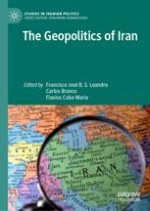2021 | OriginalPaper | Chapter
Beating the (White) House: How a “Rogue” Iran Broke Free from the “Axis of Evil” and Became an Antifragile State
Activate our intelligent search to find suitable subject content or patents.
Select sections of text to find matching patents with Artificial Intelligence. powered by
Select sections of text to find additional relevant content using AI-assisted search. powered by
